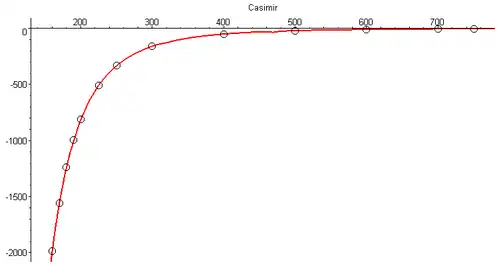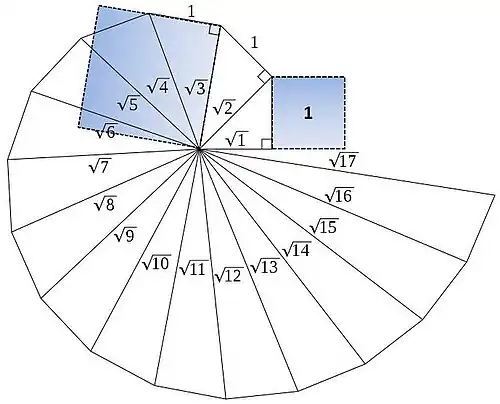Black-hole (Planck)
A Planck-unit black-hole universe CMB
The Planck hypersphere universe model describes a 4-axis incrementally (in Planck time units) expanding hypersphere universe (the bulk geometry), where the observable 3D universe exists on the surface. The fundamental premise is that particles exist on the 3D hypersphere surface and experience the physics described by ΛCDM, while the 4D bulk expansion follows Planck-scale geometric rules. The Planck universe can be considered as the scaffolding for the 3D particle universe, the method for addition of geometrical Planck units is discussed in the mathematical electron model.
It is found that the radiation component of the cosmic microwave background parameters shows a best fit for a 14.624 billion year old Planck unit universe (the radiation parameters are common to both Planck and ΛCDM cosmologies)[1]. However the particle matter (observed universe) occurs only on the 3D surface, and as the ΛCDM cosmology occurs from observations of this hypersphere 3D surface, age for this surface is given at the lower 13.8 billion years as a consequence of time dilation.
It is offered that through coordinate transformations between the 4D bulk and 3D surface frames, ΛCDM density parameters can derived from hypersphere velocity components, and this is used to explain the discrepancies in age (both are correct). The model provides geometric interpretations for dark energy, establishes a fundamental connection between Casimir forces and CMB radiation, and offers potential resolution to cosmological tensions while maintaining compatibility with observational data [2].
The Planck hypersphere expands in Planck units per increment to the dimensionless incremental (universe age = 1, 2, 3, 4...), and this (constant) clock-rate is the only free parameter required in calculating the Planck cosmic microwave background.
Universe clock-rate
The (dimensionless) universe clock-rate would be defined as the minimum discrete 'time variable' (tage) increment to the universe. As an analogy to the programmed loop;
'begin
FOR tage = 1 TO the_end //big bang = 1
conduct certain processes ........
NEXT tage //tage is an incrementing variable and not the dimensioned unit of time
'end
For each increment to tage, a set of Planck units (MLTA as geometrical objects) are added.
FOR tage = 1 TO the_end
generate Planck time T = tp
generate Planck mass M = mP
generate Planck volume (radius L = Planck length lp)
........
NEXT tage
As each tage increment adds 1 unit of Planck time tp, then in a 14 billion year old universe, numerically
(note tp has the units s, tage is dimensionless)
- tage = tp = 1062
Comparison between the calculated Planck unit hypersphere and the ΛCDM parameters (table 1.).
| Parameter | Calculated | Calculated | Observed |
|---|---|---|---|
| Age (billions of years) | 13.8 | 14.624 | 13.8 |
| Age (units of Planck time) | 0.404 1061 | 0.428 1061 | 0.404 1061 |
| Mass density | 0.24 x 10-26 kg.m-3 | 0.21 x 10-26 kg.m-3 | 0.24 x 10-26 kg.m-3 |
| Radiation energy density | 0.468 x 10-13 kg.m-1.s-2 | 0.417 x 10-13 kg.m-1.s-2 | 0.417 x 10-13 kg.m-1.s-2 |
| Hubble constant | 70.85 km/s/Mp | 66.86 km/s/Mp | 67 (ESA's Planck satellite 2013) |
| CMB temperature | 2.807K | 2.727K | 2.7255K |
| CMB peak frequency | 164.9GHz | 160.2GHz | 160.2GHz |
| Casimir length | 0.41mm | 0.42mm |
Mass density
Setting bh as the sum universe and tsec as time measured in seconds;
Gravitation constant G in Planck units;
From the Friedman equation; replacing p with the above mass density formula, √(λ) reduces to the radius of the universe;
Temperature
Measured in terms of Planck temperature TP;
The mass/volume formula uses tage2, the temperature formula uses √(tage). We may therefore eliminate the age variable tage and combine both formulas into a single constant of proportionality that resembles the radiation density constant.
Radiation energy density
From Stefan Boltzmann constant σSB
Casimir formula

The Casimir force per unit area for idealized, perfectly conducting plates with vacuum between them; F = force, A = plate area, dc 2 lp = distance between plates in units of Planck length
if dc = 2 π √tage then the Casimir force equates to the radiation energy density formula.
The diagram (right) plots Casimir length dc2lp against radiation energy density pressure measured in mPa for different tage with a vertex around 1Pa. A radiation energy density pressure of 1Pa occurs around tage = 0.8743 1054 tp (2987 years), with Casimir length = 189.89nm and temperature TBH = 6034 K.
Hubble constant
1 Mpc = 3.08567758 x 1022.
Black body peak frequency
Entropy
Cosmological constant
Riess and Perlmutter using Type 1a supernovae to show that the universe is accelerating. This discovery provided the first direct evidence that Ω is non-zero giving the cosmological constant as ~ 1071 years;
- units of Planck time;
This remarkable discovery has highlighted the question of why Ω has this unusually small value. So far, no explanations have been offered for the proximity of Ω to 1/tuniv2 ~ 1.6 x 10-122, where tuniv ~ 8 x 1060 is the present expansion age of the universe in Planck time units. Attempts to explain why Ω ~ 1/tuniv2 have relied upon ensembles of possible universes, in which all possible values of Ω are found [3] .
The maximum temperature Tmax would be when tage = 1. What is of equal importance is the minimum possible temperature Tmin - that temperature 1 Planck unit above absolute zero, this temperature would signify the limit of expansion; tage = the_end (the 'universe' could expand no further). For example, taking the inverse of Planck temperature;
This then gives us a value for the final age in units of Planck time (about 0.35 x 1073 yrs);
The mid way point (Tuniverse = 1K) would be when (about 108.77 billion years);
Relativistic Transformations
= 14.624 billion years
Age dilation:
- = 13.8 billion years
Hubble discrepancies (two different “frames”):
ΛCDM parameters from velocity-squared ratios:
- = 0.8905 (Tangential expansion energy)
- = 0.1095 (Radial gravitational energy)
Spiral expansion

In this geometrical approach, the only free parameter used in the above calculations is the universe clock-rate. This clock-rate may also have geometrical origins rather than an externally imposed 'loop'. By expanding according to the geometry of the Spiral of Theodorus, where each triangle refers to 1 increment to tage, we can map the mass and volume components as integral steps of tage (the spiral circumference) and the radiation domain as a sqrt progression (the spiral arm). A spiral universe can rotate with respect to itself differentiating between an L and R universe without recourse to an external reference.
If mathematical constants are also a function of tage, then their precision would depend on tage, for example we can construct pi using this progression;
Mathematical constants may thus be naturally occurring, their accuracy improving as the universe ages.
AL analysis (Planck and ΛCDM)
https://chatgpt.com/share/683d0485-dc90-8012-b47f-6d3d27836ce9 https://claude.ai/public/artifacts/fb6b2fe8-93f8-457a-a6db-40e464659f60 https://codingthecosmos.com/ai_pdf/Claude-Planck-LambdaCDM-06-2025.pdf https://chat.qwen.ai/s/10b4edeb-39b7-4986-ba89-5d21109f00a9
Geometrical universe links
Modelling using dimensionless geometrical forms derived from the universe clock-rate and 2 dimensionless physical constants (AI podcasts [4]).
- Electron_(mathematical): Mathematical electron from Planck units
- Planck_units_(geometrical): Planck units as geometrical forms
- Physical_constant_(anomaly): Anomalies in the physical constants
- Quantum_gravity_(Planck): Gravity at the Planck scale
- Fine-structure_constant_(spiral): Quantization via pi
- Relativity_(Planck): 4-axis hypersphere as origin of motion
- Black-hole_(Planck): CMB and Planck units
- Sqrt_Planck_momentum: Link between charge and mass
External links
References
- ↑ Macleod, Malcolm J.; "Programming cosmic microwave background parameters for Planck scale Simulation Hypothesis modeling". RG. Feb 2011. doi:10.13140/RG.2.2.31308.16004/7.
- ↑ https://codingthecosmos.com/files/Planck-Hypersphere_geometric-cosmology.pdf
- ↑ J. Barrow, D. J. Shaw; The Value of the Cosmological Constant, arXiv:1105.3105v1 [gr-qc] 16 May 2011
- ↑ https://codingthecosmos.com/podcast/ Gemini generated podcast summaries